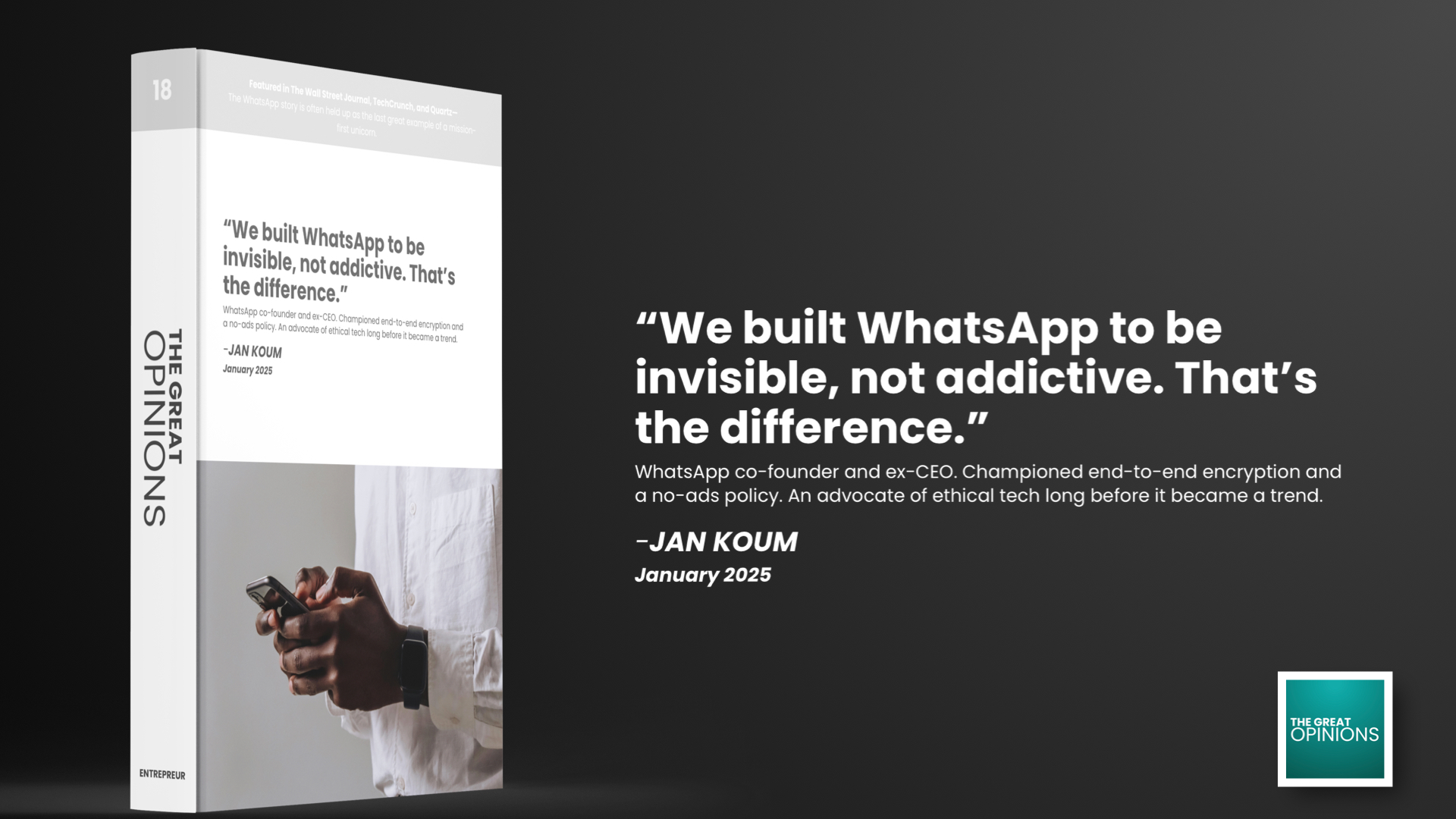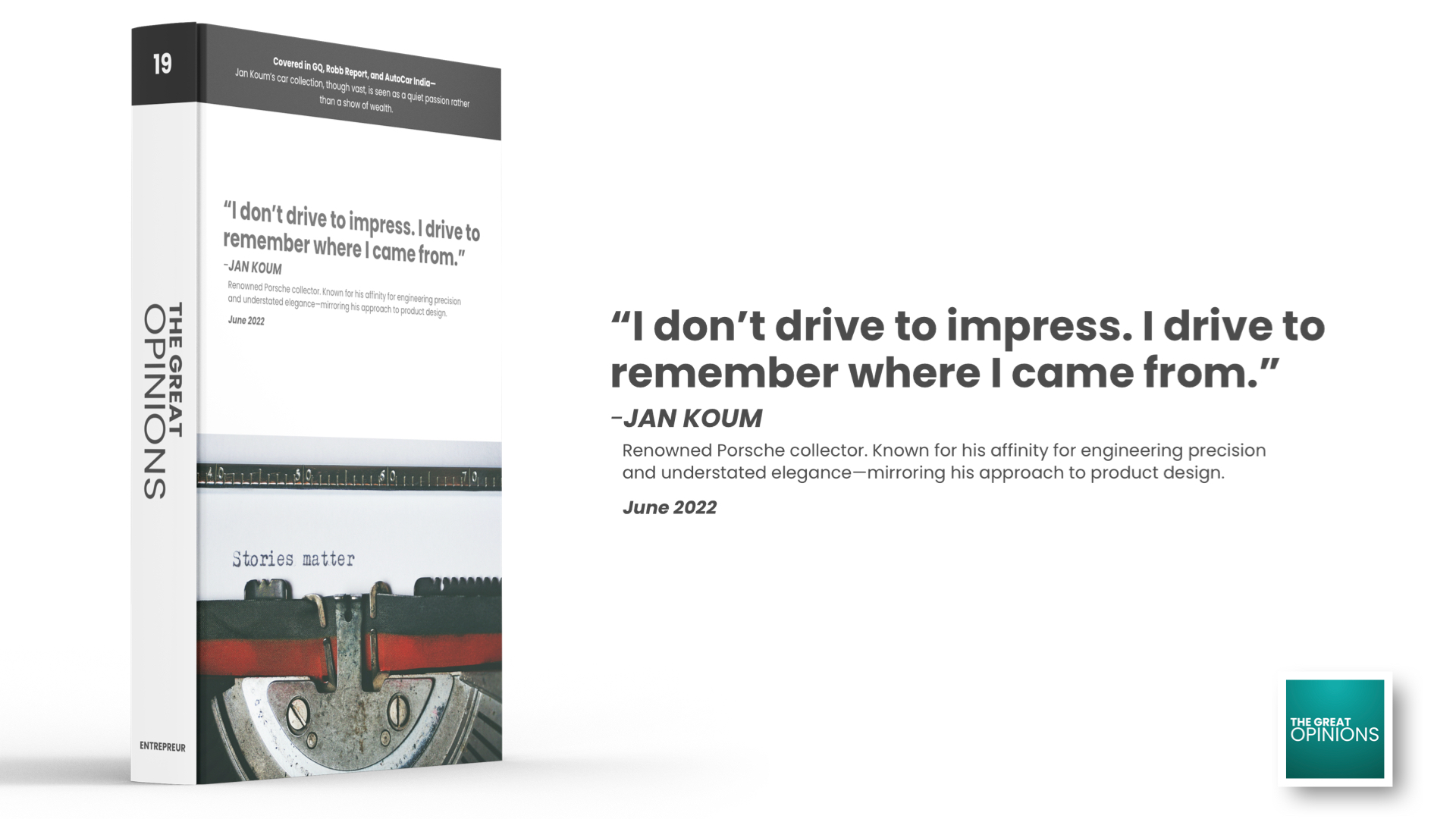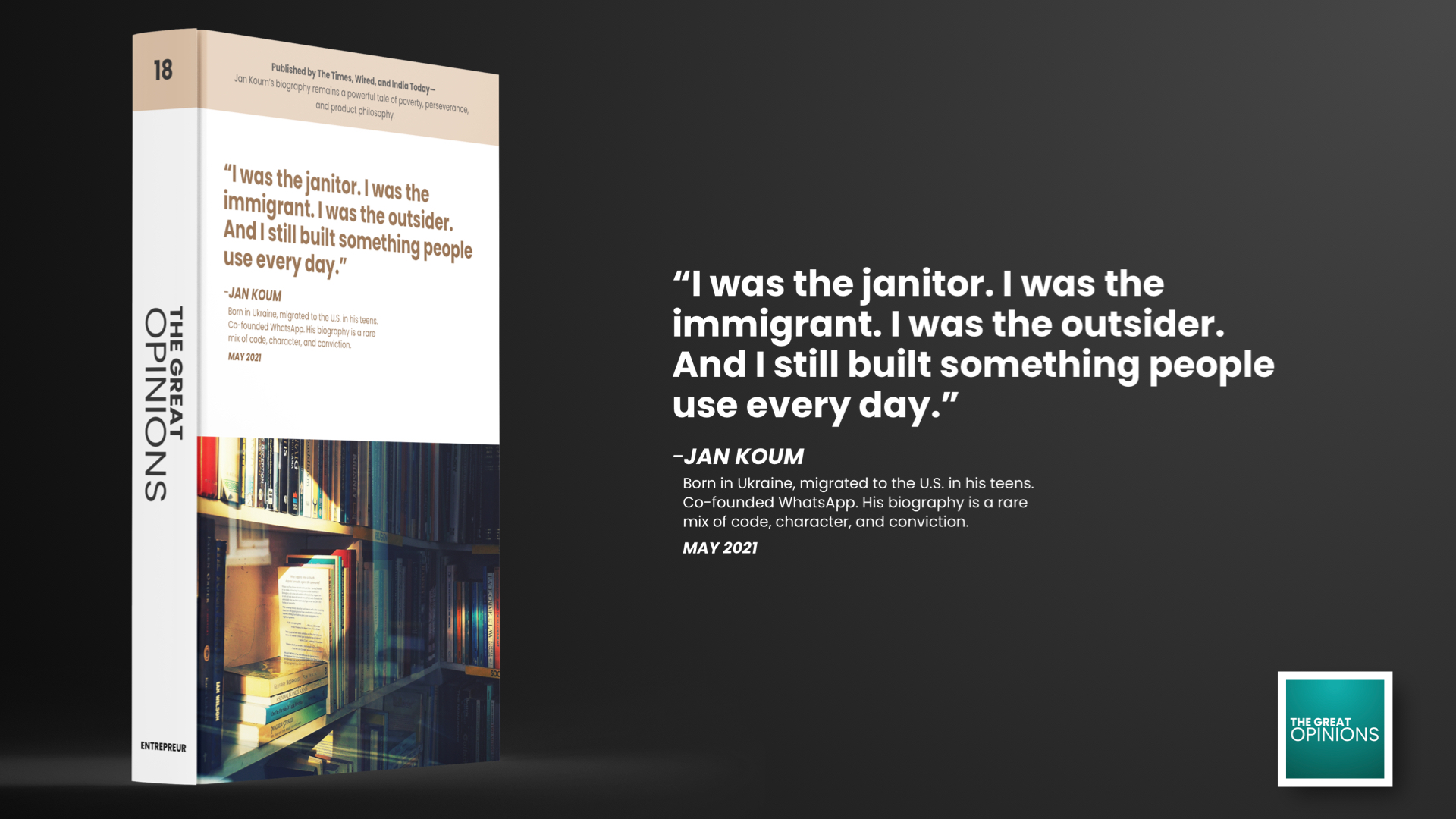A Dollar and a Dream of Jan Koum: The WhatsApp Blueprint
Facebook’s $19 Billion Text Message to Jan Koum
On a cold California morning in 2009, Jan Koum quietly scribbled the word “WhatsApp” on a yellow Post-it note stuck to his bedroom wall. No confetti. No VC fanfare. Just a name. But it would change global communication forever.
Born in Ukraine and raised under the grey skies of Soviet censorship, Koum’s early life was a study in scarcity. His family fled to the U.S. in the early ’90s, settling near Mountain View, California. Jan was 16. They lived off food stamps. He swept floors at a grocery store. His mother babysat. They shared a two-bedroom apartment and a silent vow to survive.
| Topic | Details |
| Who is Jan Koum? | Ukrainian-American entrepreneur; Co-founder and former CEO of WhatsApp; known for building one of the world’s most secure and ad-free messaging platforms. |
| Education | Studied at San Jose State University (did not graduate); self-taught in computer networking; worked at Ernst & Young before joining Yahoo! |
| Relation to WhatsApp | Co-founded WhatsApp with Brian Acton in 2009; led it from a simple status update tool to the world’s most-used messaging service, acquired by Facebook in 2014. |
| Famous Quote | “We want to know as little about our users as possible.” |
| Where It Was Said | Publicly reiterated during the early stages of WhatsApp’s growth (2012–2014), and reinforced during Facebook acquisition discussions. |
| Date of Key Event | February 19, 2014 – Facebook acquired WhatsApp for $19 billion |
| Occasion/Setting | Post-acquisition announcement and media briefings; core privacy philosophy repeated in public blog posts and interviews. |
| Witnesses | Brian Acton, Mark Zuckerberg, Facebook leadership, and global tech media. |
| Why It Went Viral | The $19B acquisition shocked the tech world, especially given WhatsApp’s refusal to use ads, collect data, or engage in traditional monetization tactics. |
| Published By | Forbes, TechCrunch, The Verge, Bloomberg, The New York Times |
| Impact | Inspired a wave of privacy-first communication tools; became a case study in how strong values can lead to massive global impact without traditional marketing. |
Koum’s love affair with coding didn’t begin in Silicon Valley — it began in thrift stores. He bought used programming manuals. He reverse-engineered networking protocols from old books. No CS degree. Just grit and a stolen internet connection.
And yet, nothing in his life foreshadowed that the jan koum whatsapp story would one day rewrite the script on communication privacy.
The Boy Who Cleaned Grocery Stores
Jan’s early years weren’t filled with billion-dollar dreams. They were full of bus rides, scraped knees, and language barriers. His mother was diagnosed with cancer soon after they arrived in America. Jan became both nurse and son. She passed away when he was 24.
He joined Yahoo! in 1997 as an infrastructure engineer, a job he kept for nearly a decade. He met Brian Acton there — the man who’d later become his co-founder. Both shared the same distrust of advertising models. Both had seen enough Silicon Valley fakery to know they wanted to build something pure.
Their friendship wasn’t just technical — it was philosophical.
A Dollar and a Dream: The WhatsApp Blueprint
In 2009, after being rejected for jobs at Facebook and Twitter, Jan and Brian began tinkering with a messaging app. Jan hated the idea of ads mining your conversations. So they built something different — lightweight, encrypted, ad-free.
The name? “WhatsApp” — a pun on “What’s Up?” It cost $1 to use. That dollar wasn’t about revenue. It was a firewall against spam, a psychological anchor. A signal: “We respect your time.”
They launched the app. No grand unveiling. No launch party. Just word-of-mouth virality.
By 2012, WhatsApp had 100 million users. By 2013, it had 400 million. And every user had the same promise — your chats are your own.
Rejection, Encryption, and the Zuckerberg Call
The call came in 2014. Mark Zuckerberg wanted a meeting. At that point, WhatsApp was handling 50 billion messages a day — more than global SMS traffic.
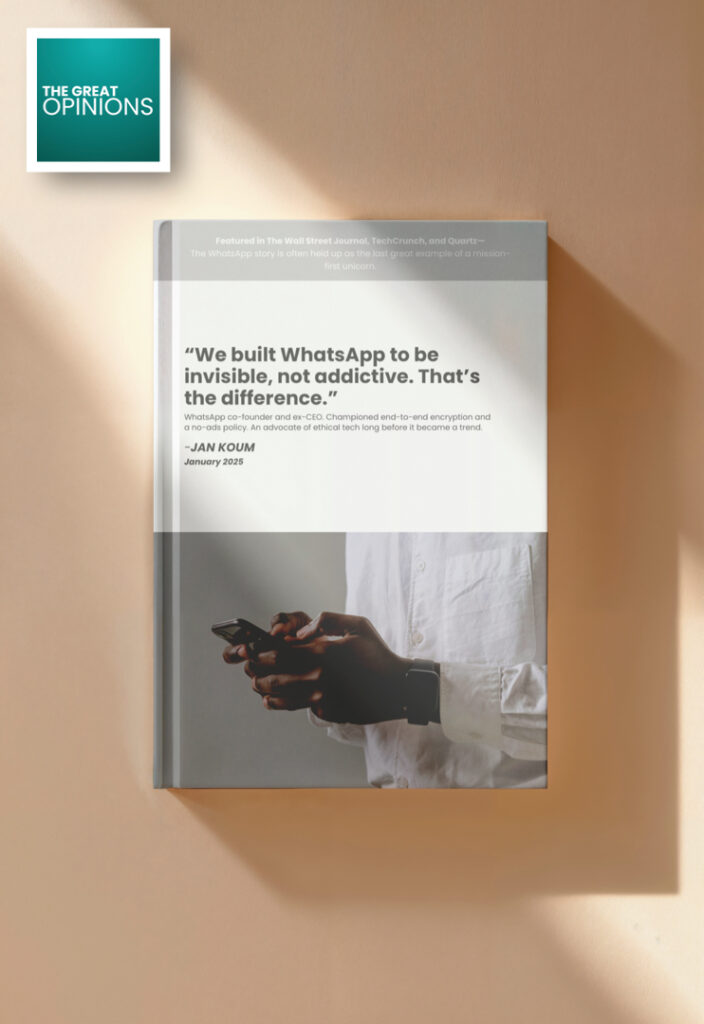
They met. Not in a boardroom. But in the quiet of Zuckerberg’s dining room.
Zuck offered $19 billion — Facebook’s largest acquisition ever. Jan agreed, but on one condition: WhatsApp would remain private, ad-free, and focused on encryption. Facebook agreed. For a while.
Jan Koum joined Facebook’s board. But by 2018, he walked away from it all — the board seat, the prestige, the power. Why? Because Facebook’s new data policies threatened the core principles WhatsApp was built on.
He left $850 million in unvested stock on the table.
That wasn’t a resignation. That was a rebellion.
When Jan Met Brian
They were never suits-and-sneakers founders. Jan and Brian had their meetings over coffee and code. They built WhatsApp without ever hiring a PR team. No interviews. No influencer hype.
Jan once said, “I want to do one thing, and do it well.”
And he did.
Their entire office had only 55 employees managing 1 billion users. The engineering was lean. The culture was quiet. There was no “growth team.” Just engineers solving real-world communication problems.
WhatsApp wasn’t built in a pitch deck. It was built in silence.
The No-Ads Philosophy
“We don’t want people to think about how many eyeballs we have. We want them to think about how private their messages are.”
That was Jan’s philosophy. It wasn’t popular in Silicon Valley, where user attention is currency. But Koum insisted on privacy. WhatsApp never stored messages on servers. It didn’t know your name. It didn’t ask for your birthday.
This wasn’t just a tech feature. It was an ideological stand.
Facebook’s $19 Billion Text Message
The acquisition stunned the world. A messaging app with no revenue model? Acquired for $19 billion?
To Jan, the money wasn’t the headline. The principle was.
He put the WhatsApp logo on the door of Facebook’s HQ the day the deal was announced. But in his heart, he never gave Facebook the keys to his soul. When they started pushing monetization policies and violating encryption commitments, Jan resigned.
Later, it was revealed that the app was worth far more — in data, influence, and global reach.
But Jan Koum didn’t stick around to exploit it.
He simply walked away.
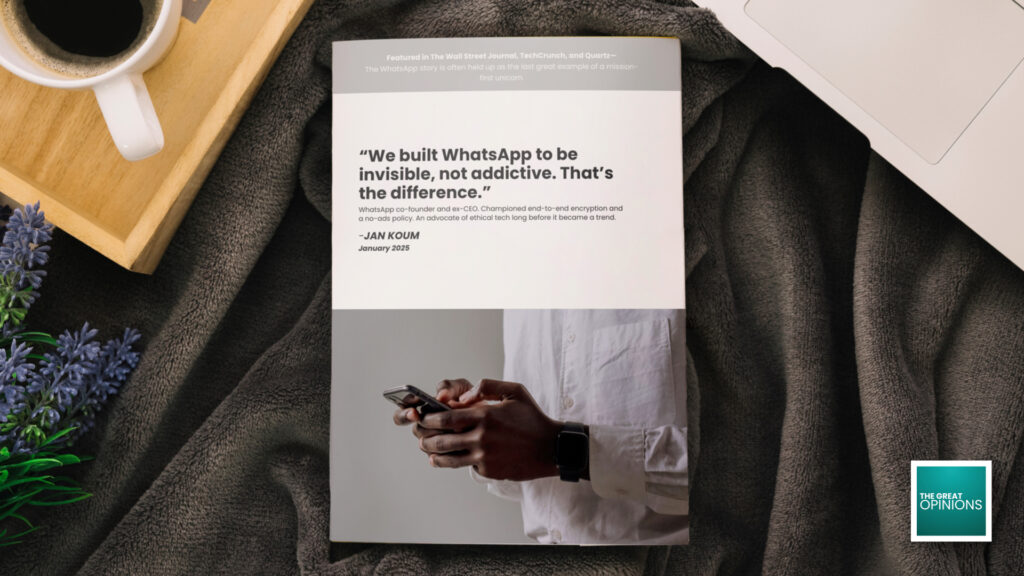
Conclusion:
Jan Koum’s WhatsApp story isn’t a Silicon Valley fairy tale. It’s a manifesto. A story of how two men built one of the world’s most powerful apps with zero ads, zero gimmicks, and 100% integrity.
In an age where every notification is a sales pitch and every ping a product, Koum built a sanctuary — one message at a time.
Source:
https://www.goodreturns.in/jan-koum-net-worth-and-biography-blnr188.html
https://www.cnbc.com/2017/04/24/how-whatsapp-founder-jan-koum-went-from-welfare-to-billionaire.html
https://bookipi.com/business/whatsapp-founder-jan-koum
https://tradersunion.com/persons/jan-koum
https://www.thriday.com.au/blog-posts/jan-koum-whatsapp

